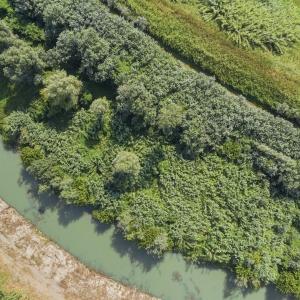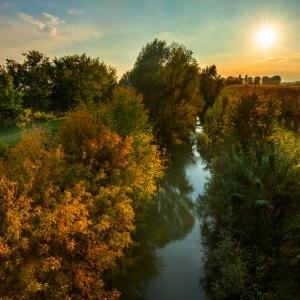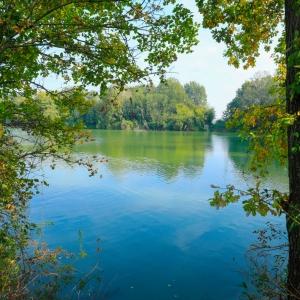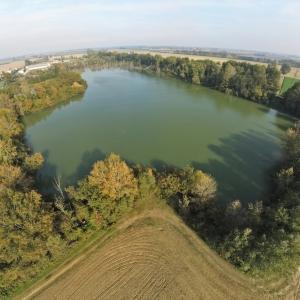A LAND IN THE MIDDLE
The most distinctive feature of this area, which includes the municipality of Alfonsine, Bagnacavallo, Conselice and Russi, is the presence of different rivers, flowing from the Apennines parallel to the sea, that affect human settlements and social and economic activities throughout the year. The Lamone, Senio, and Santerno together with the most important, the Reno (the ancient Po di Primaro), have marked the boundaries and determined the transformation of this landscape.
The area has been inhabited since the Bronze Age, as evidenced by many archeological finds, and expanded into a big swampy landscape, with stagnant waters and marshes, reed beds and woodland, thanks to frequent flooding. The use of the resources of this ecosystem led to the development of specialized activities, like the cultivation of rice and the production of manufactures made with marsh plants. Also, land reclamation gave great impetus to extensive grain, fruit and vegetable farming. The proximity of major cities such as Ravenna, Faenza and Imola today give an extra economic boost for commercial and tourist traffic to this area due to its strategic location. This is a land rich in artistic and cultural treasure that reflects the entire span of its history, from ancient times to the modern era.
THE BASSA ROMAGNA
A large part of the Romagna territory is situated in an environment modified by reclamation. Conselice stood on the Po di Primaro and was a port subject to fl ooding. The many mansions document how the inhabitants lived in an agricultural economy managed by big landowners. As a demonstration of how the area is still vulnerable to high waters, there is a wetland designed for hydraulic protection of the town: the " Boschetto di Via Gabriella Dalle Vacche". Built in an area covered by lagoons and marsh lands, the town of Alfonsine owes its name to Alfonso Calcagnini that fi rst started reclamation works granted by Borso d'Este in 1464.
The present urban layout is different from what existed before the Second World War: in fact, Alfonsine was almost completely destroyed in 1945 as the front line extended to the Senio River. The origin of the name of Bagnacavallo is controversial: according to tradition, there was a healing fountain for horses but among the bathers was none other than Emperor Tiberius himself. A more reliable hypothesis may be that here there was a ford to cross where many travelers watered their horses. With certainty, the name appears from the Xth century, even if the settlement is much older, with evidence from the Bronze Age. In the city, built on a plan of medieval origin, it is possible to admire many old and religious buildings, but don't forget the Ecomuseum of Marshy Herbs and the Podere Pantaleone
RUSSI
The origin of Russi is very old: some artifacts, in fact, have been dated between the late VIIth and early VIth century BC. Often sought after over the centuries for its favorable location, the city has been equipped with defensive systems such as the Rocca, a fort dating back to the IXVth century ordered by the family of the Da Polenta from Ravenna. Today it houses the Civic Museum which displays finds from the Roman Villa, and an art gallery. Discovered by chance in 1938 and dating from the Ist century AD, the Roman Villa of Russi is an exceptional discovery for the completeness of the construction and for its mosaics. The archaeological site is surrounded by the Oasi Ecologica della Villa Romana, an area of environmental balance whose core is a former quarry basin now flooded, which offers a variety of flora characteristic of both wet and dry areas.
The current layout of the city is from the XVIIIth century and derives from the reconstruction that took place after a devastating earthquake at the end of the XVIIth century. Very interesting is Palazzo San Giacomo, the summer residence of the Counts Rasponi, where you can admire a vast cycle of allegorical and mythological frescoes. The nearby hamlet of San Pancrazio is home to the Museo della Vita Contadina in Romagna (Museum of Country Life in Romagna) that displays tools for daily use in the countryside.






